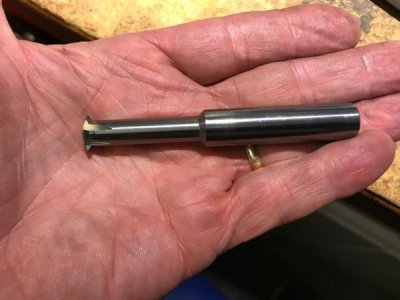- Joined
- Sep 29, 2014
- Messages
- 2,102
Not really, thread milling is done with tools that are 90 Degrees to the work much like a lathe tool, relief angles are required.The OP wanted to thread to a shoulder. A grinding wheel would have to be set at an angle to match the pitch of the thread. That wouldn't get to the shoulder.
The helix angle changes with thread lead and diameter, a thread lead of 10 TPI has a different helix angle at different diameters.
You will notice that one cutter will cut multiple leads as seen here.
https://www.mscdirect.com/product/details/40232878?fromRR=Y


